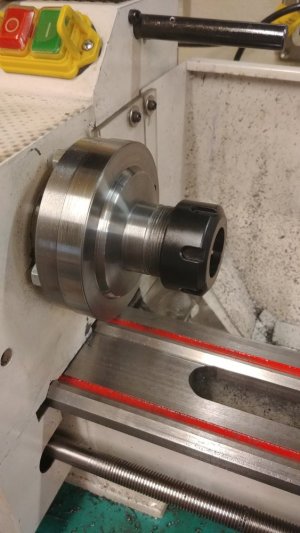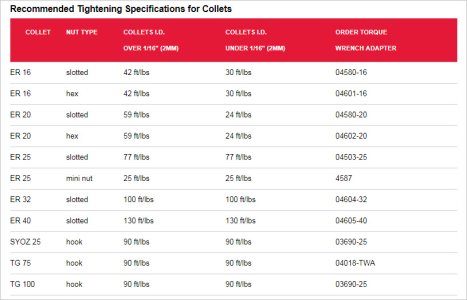0.015" sounds like a lot especially when you have those good body dimensions.
- ensure you are measuring runout right immediately by the nose of the collet, not at some extended distance away. Your reamer shank should be accurate but... ya never know
- make sure there is no crud in the snap ring thingy where the collet nose engages & it pops in positively
- most people underestimate the recommended tightening torque of these collets before they are considered properly clamped. Table attached. I have to admit when I used mine in the mill I gave it a slight tug. the EM seemed tight but it was nowhere near these values. It almost seems like overkill, but that's what they say
- I'd try some other collets & different shanked endmills if you don't have dowel pins. Be careful of drills especially cheapo's. Often times I have seen raised lettering where the size is stamped on the shank in vs being engraved in.
- possibly you shifted the chuck when tightening the collet? Did you check runout of the body after the bad collet runout reading
- and yes, sometimes you get some duds in the offshore sets. Look to see if there is any grinding grit in the slits that might prevent equal closure


